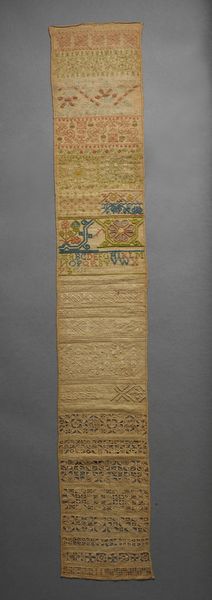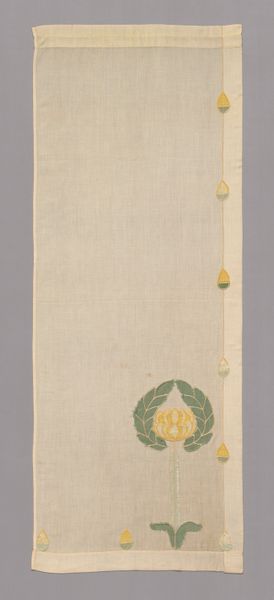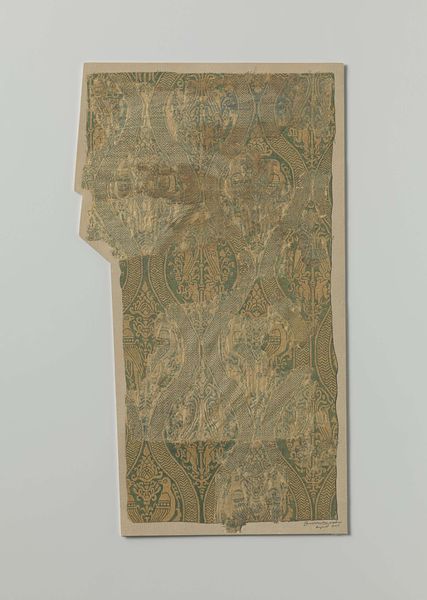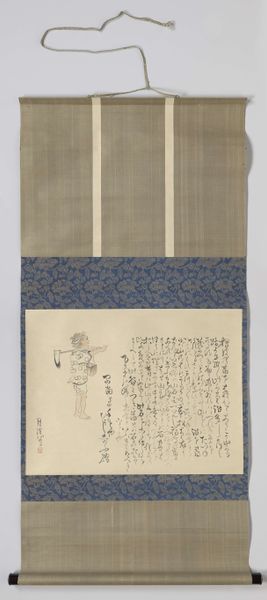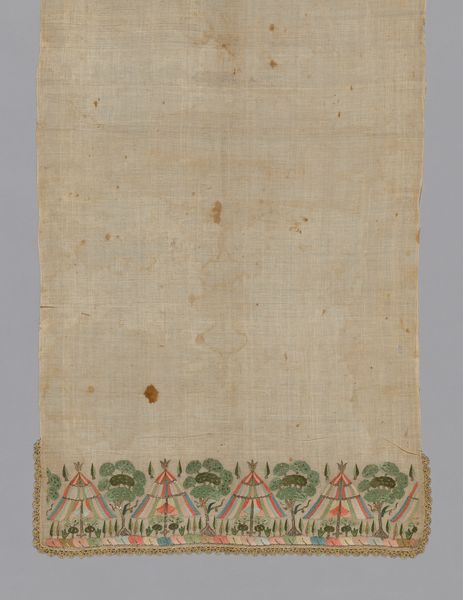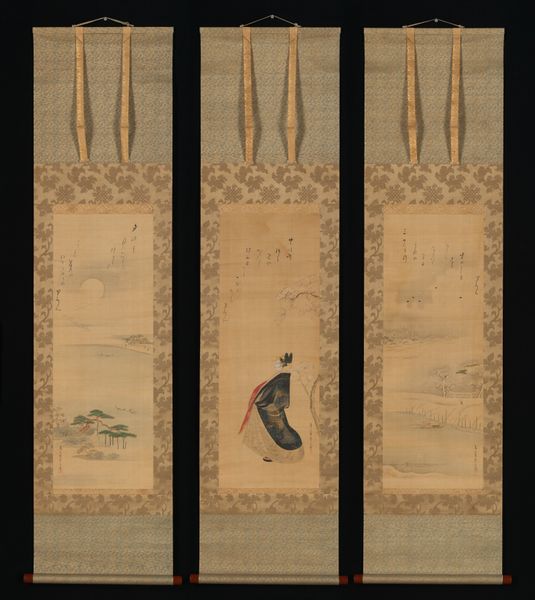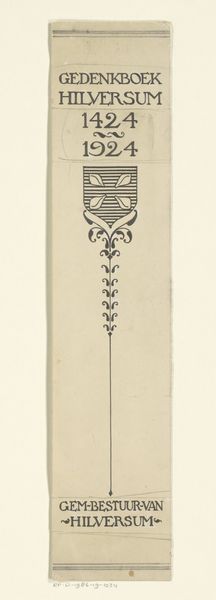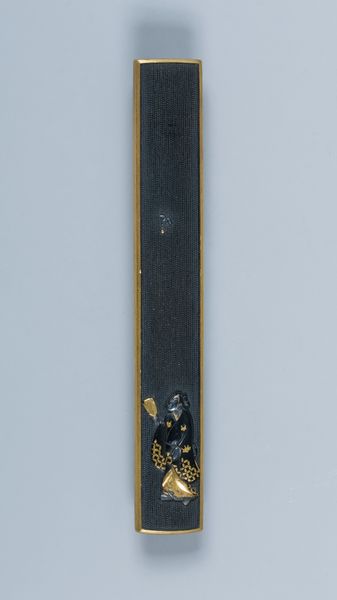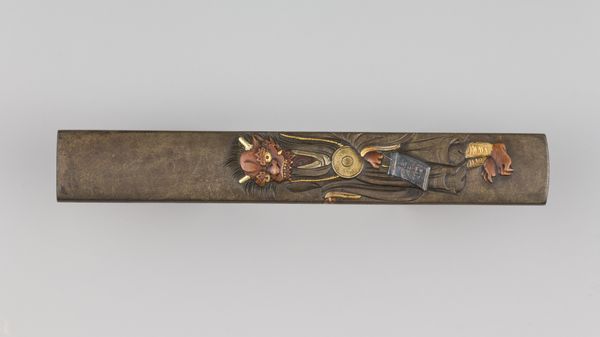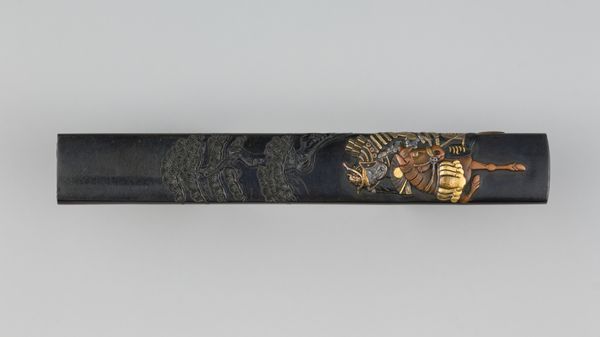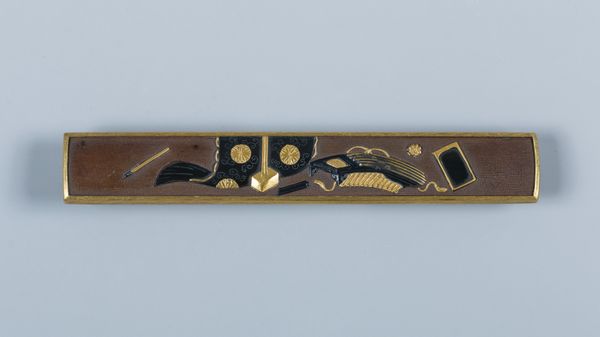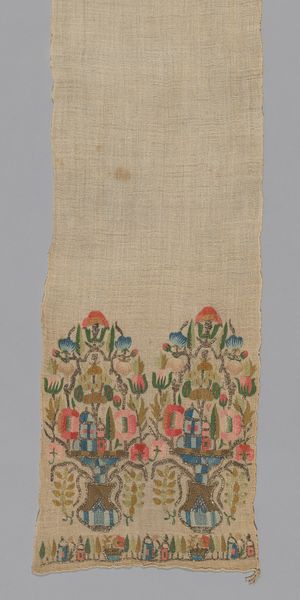
drawing, textile, watercolor
#
drawing
#
old engraving style
#
textile
#
watercolor
#
folk-art
#
watercolour bleed
#
watercolour illustration
#
rococo
Dimensions: width 31.5 cm, height 5 cm, depth 25.5 cm, height 59 cm, width 4.5 cm
Copyright: Rijks Museum: Open Domain
Curator: What a fascinating find. This object, simply titled “Oranjelint,” which translates to Orange Ribbon, dates to after 1747 and comes to us from an anonymous maker. It’s a delicate piece combining drawing and watercolor on textile, currently held here at the Rijksmuseum. Editor: My initial impression is of something…fragile. The narrowness, the faded colors. It has the air of a secret message, carefully rendered on such an ephemeral material. The texture of the fabric seems incredibly fine. Curator: It does carry a hushed tone, doesn't it? Notice the heraldic imagery, the stylized floral motifs. These weren’t randomly chosen. The orange, naturally, links it to the House of Orange-Nassau, a powerful symbol of Dutch identity and nationhood. This was folk-art with clear purpose. Editor: Precisely! It makes me wonder about the creation process. Was this made individually or part of a wider system of textile production? And consider the pigments; what dyestuffs were used to achieve these hues? It offers insights into the available resources and trade routes of the time. Curator: Absolutely. Beyond its physical makeup, think about its purpose. It served to proclaim loyalty to the Oranges. Those repeated motifs reinforce this message across time. A silent declaration of allegiance worn—or displayed—to signal cultural unity. Editor: Or perhaps concealed? A quiet act of resistance, of claiming a political position within a society dealing with considerable turmoil and outside pressures. Materiality and creation processes also have coded meanings. Think of who produced it, and in what environment? Curator: A point well taken! I’m further reminded how the piece echoes Rococo aesthetics. See the sinuous lines, the light washes of color—this artwork's anonymous origins contrast strikingly with the luxury generally associated with the style. Editor: The use of textile, itself—rather than, say, painting on panel—speaks to an important distinction. Textile arts are always social. A material witness to daily life in both production and wear. It’s a democratization of design in some ways. Curator: Indeed, and I see its significance renewed, after our conversation, in understanding it as a deliberate artifact, a physical embodiment of complicated histories. Editor: And that the material record here is incredibly informative for understanding this intersection of craft, personal expression, and larger societal systems.
Comments
No comments
Be the first to comment and join the conversation on the ultimate creative platform.
